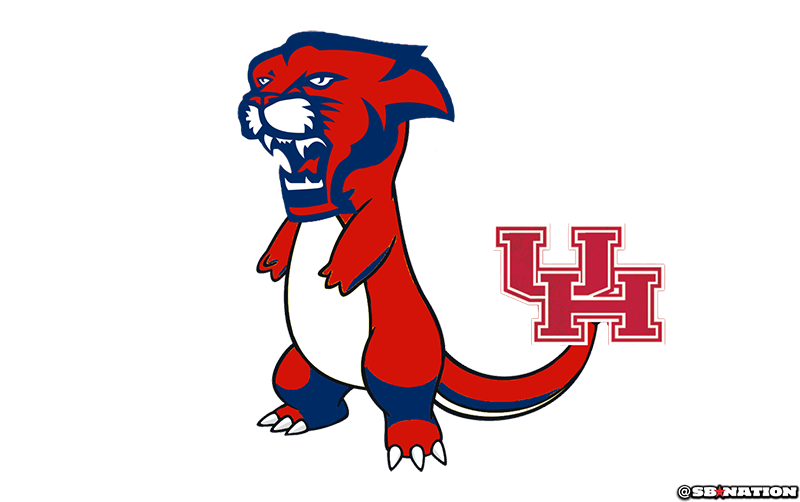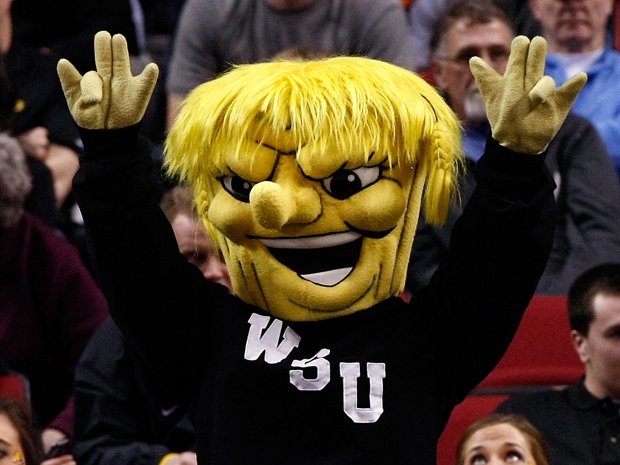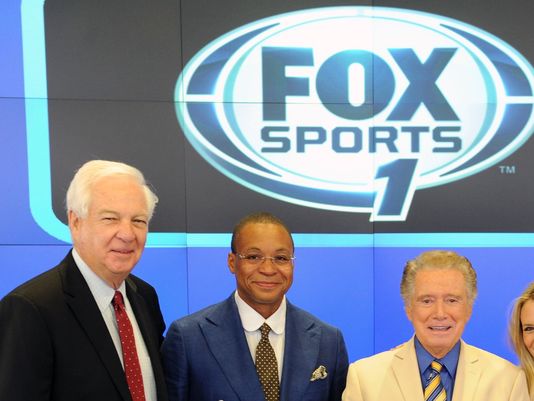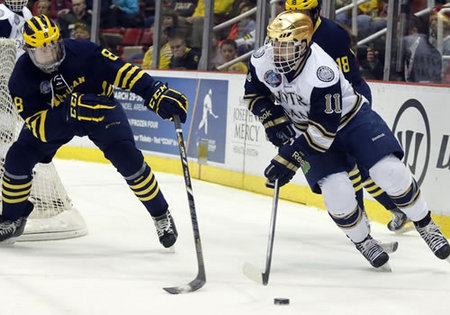
For the past several years, the Big 12’s public position on potential expansion was constantly wait-and-see with lots of studies being commissioned and a general lean towards staying at 10 members. The league’s presidents and other stewards (despite public proclamations from Big 12 commissioner Bob Bowlsby to take action on expansion one way or the other) seemed to indicate that they were simply not motivated to expand, effectively stating that the options weren’t good enough (sort of like how much of America despises both major presidential candidates at record levels). The focus from the Big 12 was more about short-term maximization of their ability to make it into the College Football Playoff (whose leaders finally figured out today that New Year’s Eve blows for watching playoff games).
In meantime, though, the Big Ten put into place the structure of a new record-breaking TV deal with Fox and ESPN (on top of existing rising revenue from BTN) and the ACC announced the formation of the ACC Network with ESPN that will provide a financial windfall for that conference. Not coincidentally, the Big 12 presidents put down their Pokémon Go* games for a few moments and changed their tune on expansion within 24 hours of the finalization of the ACC Network deal. Now, the Big 12 is looking to add at least 2 and maybe even 4 additional members.
(* The Charmander as Houston Cougar image above come from a SBNation post about all of the FBS football teams’ corresponding Pokémon characters that was written well before the Pokémon Go craze came about. Enjoy!)
What happened? Well, it appears that the Big 12 might have finally gotten off of its delusion that it could ever attract members of the ACC or any other power conference. Coaches like Bill Snyder and partisan Big 12 fans might try to suggest schools that left the Big 12 wish that they could come back, but trust me on this one: every single person that actually matters at the schools that left the Big 12 are happy to be far, far, far away from that dysfunctional mess. The Big Ten, SEC, Pac-12 and ACC are all academically, financially and demographically superior to the Big 12… and it’s not even a contest. The ACC Network deal seems has to cemented the notion that the Big 12 can’t hold out for the misguided hope to pick off other power conference schools (albeit Pete Thamel of Sports Illustrated reported some residual delusion within the Big 12 that they could poach some Pac-12 schools in the next decade, which ought to be asinine to anyone that has followed conference realignment over the years). Every reasonable Big 12 expansion target is going to come from one of the non-power Group of 5 (“G5”) conferences outside of independent BYU.
At the same time, this self-realization by the Big 12 members is coupled with the very real fear that Texas, Oklahoma and/or Kansas could be out the door when the current conference Grant of Rights agreement expires in 2025 or even upon expiration of the new Big Ten TV deal in 2023 (which gets into the time range where breaking the GOR agreement might be financially feasible). The other members of the Big 12 have already seen Texas attempt to create the Pac-16 and Oklahoma’s leadership openly talk about the school having options in the realignment sphere. Maximizing short-term money by keeping membership numbers low is only sustainable if the Big 12’s three top flight risks stay put. As a result, the Big 12 has to engage in some “CYA expansion” whether they believe that UT, OU and KU will stay or not. When the conference’s largest TV markets, top athletic recruiting territory, fastest growing area, best academic institution and most valuable national brand name are all wrapped up in the single school the University of Texas, the rest of the Big 12 needs to expand and diversify its membership for survival in the event that the Longhorns ever decide for a “Texit”.
Now, that being said, the worst house (the Big 12) in Beverly Hills (the power conferences) is still significantly more valuable than the nicest house in Compton (G5 conferences). As Thamel noted, each member of the Big 12 makes more annual TV revenue than the entire AAC (which is the highest-paid G5 conference). Indeed, AAC commissioner Mike Aresco said this week that he has been “talking to the (athletic directors) and the president of the schools that might leave, and it looks like some of them will.” The chasm between the power and non-power ranks is so stark that none of the G5 schools to pass on any opportunity to join any of the 5 power conferences (the “P5”) regardless of geography or a hope that another better “fit” within the P5 might be coming down the road in the future (e.g. an Eastern school like UConn isn’t going to pass on a Big 12 invite in the hopes of an ACC or Big Ten invite later). Every G5 school has to take any Big 12 offer that it receives immediately because this expansion process might constitute the last new additions to the power conference ranks for the next generation. The stakes couldn’t be higher for the handful of G5 schools that are in position to make the jump.
When I started writing frequently about conference realignment with the formation of the Big Ten Expansion Index nearly seven(!) years ago, I’ve made some correct predictions and quite a few wrong ones. However, I will always believe in my first rule of conference realignment: “Think like a university president and NOT like a sports fan.” Too many sports fans look at recent on-the-field records (what I call the “What Have You Done For Me Lately?” Syndrome) and not the long-term off-the-field factors that drive conference realignment, such as TV revenue, markets, demographics, stability and academic prestige. No one should analyze an expansion candidate based on the best case scenario where a school goes 12-o in a football season. Instead, the proper analysis for adding a school is whether it still provides value (whether in the form of a major TV market, top recruiting territory or academic excellence) even if it has a 0-12 record. This is something that I have stressed for many years and I’ll continue to emphasize it here. With that in mind, let’s take a look at the schools that are generating the most discussion for Big 12 expansion:
POLE POSITION
CINCINNATI
I created the Big 12 Expansion Index nearly three(!) years ago that admittedly had some interesting results (such as a high ranking for San Diego State) due to my desire to create an index based on as many objective factors as possible without inserting any subjective “smell test” bias. Still, my overall conclusion at the time was that Cincinnati was the very clear #1 best fit for Big 12 expansion and I still firmly believe that to be the case today. Whether the Big 12 expands by 2 or 4 schools, it’s extremely difficult to see how Cincinnati wouldn’t be involved in any combination. At worst, the Bearcats seem to be the #2 option out of the realistic expansion candidates regardless of who might be the personal #1 favorite of any Big 12 school. They provide a solid new TV market, excellent historical performance in both football and basketball, revamped facilities, an entry point into the state of Ohio (which would become the best football recruiting territory in the Big 12 outside of the state of Texas), good academics (particularly at the graduate level) and a way to eliminate the issue of West Virginia being a geographic and cultural island within the league. Cincinnati might not be the very best option in any of those individual categories, but it is the only one that is good-to-great across-the-board for the Big 12.
PRIME CONTENDERS
HOUSTON
When some Tweets from well-connected Dave Sittler surfaced over one year ago(!) that Houston would be a prime expansion target for the Big 12, I noted the following:
Putting aside the Big 12’s obvious delusions of grandeur of reverse raiding the Big Ten for Nebraska or adding Notre Dame and/or Florida State, this actually appears to be some legitimate information from someone with contacts with people that control the situation. Follow Sittler’s Twitter timeline for some further comments. Bottom line: Houston has seriously vaulted itself into Big 12 expansion talks. Now, this makes little sense for the Big 12 when looking at the typical goals of power conference realignment, such as expanding into new TV markets and recruiting territories. However, we would be remiss to forget that Texas politics (whether we’re talking about the state itself or the university) effectively control the Big 12 (as Sittler alluded to in his Tweets). The Big 12 was initially formed with heavy demands from then-Texas Lt. Gov. Bob Bullock and other Texas politicians in order to get Texas Tech and Baylor to tag along with UT and Texas A&M. It’s a bit of surprise to see such relatively strong statements about Houston’s Big 12 candidacy here, but not completely shocking when looking at the political history of the conference. Back in the midst of conference realignment mania in 2010, I recall then-UT President Bill Powers stating that it was a goal for Houston to become a “Tier 1” university, so there was an acknowledgment even back then of some broader goals to elevate the stature of that school.
Sure enough, look at the explicit Tweets from the past week from the Governor of Texas, Lt. Governor of Texas and the President of the University of Texas:
The president of Texas Tech then also issued a statement in support of adding Houston to the Big 12. It’s pretty clear that no matter what people will try to argue, there’s a whole separate political game that’s being played here where the normal metrics of conference realignment (such as obtaining a new TV market) do not apply.
Keep in mind that the Big 12 requires 75% of its members to approve a new school, which means any expansion candidate needs 8 votes. As a result, Texas and Texas Tech cannot block Big 12 expansion by themselves, but don’t be surprised if TCU and Baylor fall in line behind their state counterparts. TCU and Baylor might be private schools, but they certainly aren’t beneath the state political game, particularly with how Baylor got into the original Big 12 due to powerful alums in the Texas state government in the early-1990s and leveraged lawmakers that played a part in derailing the proposed Pac-16 deal of 2010. Meanwhile, TCU essentially owes its Big 12 membership to the efforts of UT, so it’s not a stretch to see the Longhorns call in a chit on that front.
The upshot is that it won’t take much for the Texas-based schools to effectively have veto power over any Big 12 expansion decision: if UT and Texas Tech are politically-aligned and just attract one of either Baylor or TCU, then they have as much leverage as the University of Virginia did in making its vote for ACC expansion in 2003 contingent upon inviting Virginia Tech (which also happened to be forced upon UVA by state lawmakers, including prominent moves by then-Lt. Gov. and current US. Senator and Democratic vice presidential candidate Tim Kaine*). There are other reasons that Houston could be a solid expansion pick for the Big 12, such as its institutional support and solidifying a Houston TV market that is being encroached upon by the SEC via Texas A&M and LSU fans, but the Texas state political developments may trump everything else. That’s why no one other than Cincinnati should feel very safe in a 2-team expansion by the Big 12 and a great candidate could be left without a chair when the music stops even in a 4-team expansion.
(* Judging by the Democratic National Convention last night, I’m fairly certain that Tim Kaine loves balloons more than my 7-year old twins… and every other kid that I’ve ever met in my entire lifetime.)
BYU
If Houston could get into the Big 12 because of outside personal political relationships even if it doesn’t fit traditional conference realignment goals, BYU might end up outside of the Big 12 because its relationships (for better or worse) within the conference haven’t been as strong despite being arguably the strongest single expansion option. When looking at what “matters” to university presidents in expansion, BYU seems to fit the bill: great fan base, excellent academics, new and growing TV market, national appeal due to its direct link to the LDS church (essentially being to Mormons what Notre Dame is to Catholics) and a fantastic top-to-bottom athletic department*. If the Big 12 were to pick a school based on a blind resume of the metrics that are critical to conference realignment decisions, I’d be certain that BYU would be picked every time.
(* I’ve seen some suggestions that BYU might end up being a football-only candidate for the Big 12 in order to avoid Sunday play issues, but that doesn’t seem like the right move for the conference considering how strong BYU is in basketball and non-revenue sports. BYU’s entire athletic department can provide a ton of value, whereas there are some other schools that we’ll discuss later that would make more sense as football-only membership considerations.)
Yet, for whatever reason, the expansion prospects for BYU seem to run hot and cold. There are certainly plenty of observers out there that believe that BYU is near the top of the list, but then there are very well-respected reporters that have been correct more often than not on realignment news (such as Brett McMurphy of ESPN.com) that have been much more skeptical of BYU’s chances. One argument that is out there is that the Big 12 is focused on expanding to the east. The prohibition of athletic teams playing on Sunday is another possible negative factor, although it wouldn’t be applicable to football. A more pernicious suggestion brought up by Chadd Scott is that there could be an anti-Mormon sentiment among university administrators.
Despite the cold bucket of ice water above for BYU fans, I’ve been on the record many times that if I were running the Big 12, the top two picks for expansion based on what the conference claims to be looking for ought to be Cincinnati and BYU. If the Big 12 is looking to maximize revenue (which is goal #1 in conference realignment), then it’s difficult to see them passing on BYU regardless of any other perceived problems.
UCONN
UConn is right next to BYU in terms of being an extremely valuable school by G5 standards that would fare well in a blind resume test. It is the only school mentioned here that’s a true unambiguous state flagship university, which P5 members inherently like since most of them are flagships themselves. At the same time, Connecticut has great academics, a location that gives them access to the massive New York City and Boston TV markets on top of its affluent home state and elite of the elite programs in basketball (both men and women). Indeed, UConn’s stock has been justifiably rising in Big 12 expansion reports compared to very few mentions over the past couple of years. UConn just feels like it should be a P5 school and it has the athletic department revenue to back it up. The two main concerns for UConn’s Big 12 candidacy are (a) geographic fit and (b) football fit (which rules conference realignment). The geographic fit issue is based on the fact that it extends the already far-flung Big 12 all the way to the Northeastern corner of the United States. Personally, I think that issue can be overcome by UConn since it could argue that it wouldn’t be any more of a geographic outlier than BYU (who doesn’t seem to get docked points as much on geography) and its access to the NYC and Boston markets would justify the move.
Now, the football fit isn’t as easily explained away. It’s not so much the on-the-field performance of UConn, but rather that the other football-based metrics, such as the lack of a recruiting territory (where New England and the neighboring State of New York constitute arguably the worst per capita FBS recruiting region in the country). UConn also simply has a young FBS football program – it only moved up to then-Division I-A in 2002 in a world where P5 conferences (whether right or wrong) put a premium on having generations of tradition.
So, the institutional profile, TV markets and overall athletic department strength point to UConn being a very strong candidate for the Big 12 even if there’s only a 2-team expansion, yet the geographic and football fit issues make it vulnerable enough that its fans are unfortunately going to sweat whether it’s a 2 or 4-team expansion. To be clear, if I were running the Big 12, I’d certainly add UConn in a 4-team expansion since I believe that it’s clearly a P5-level institution, but it’s a school whose prospects are hard to read in the real world. UConn is essentially in the same “hot or cold” boat as BYU where there are respected people that believe that they’re near the top of the Big 12 expansion list while others that are in the know aren’t as optimistic.
MEMPHIS
If Houston has political backers in Big 12 expansion, Memphis is engaging in some Chicago/FIFA/IOC-style “patronage” with FedEx chairman Fred Smith essentially offering to pay for the Tigers to get into the league. Memphis also brought out its biggest PR gun to date this week:
The next time that someone tells you that you’re the dorky college football equivalent of a baseball sabermetrician for being obsessed with conference realignment, you can retort that Justin Timberlake (who is in contention for The Song of the Summer yet again*) is ALL-IN on the action.
(* My personal definition of “The Song of the Summer” is (a) it needs to be played within the first 15 minutes after the dance floor opens at any wedding that summer and (b) Grandma needs to be dancing to that song without irony or needing to participate in a gimmicky line dance. On those metrics, Timberlake’s “Can’t Stop the Feeling!” is probably taking the cake since it’s a bit peppier than the entries from Drake and Panda while also being completely inoffensive. I think Sia is coming on strong here as we get towards the end of the summer, though. Unfortunately, my favorite performance from JT isn’t getting much airplay at weddings.)
In all seriousness, Memphis has a number of attractive attributes for the Big 12: improving football program, solid TV market, excellent basketball fan base (which may or may not translate to football), location in a top notch football recruiting territory and geographically sensible for the conference overall. The negatives are based on academic reputation and its direct competition from the SEC from multiple directions. If Cincinnati is a likely pick and Houston has the political leverage to get into the Big 12, it feels like this is going to be a competition between BYU, UConn and Memphis for the last two spots in a 4-team expansion. In particular, outside of the fact that both UConn and Memphis are known more as being basketball schools, UConn seems have strengths where Memphis is weaker and vice versa. It will be interesting to see what the Big 12 prioritizes here.
ALL OR NOTHING
UCF AND USF
I put Central Florida and South Florida together in the analysis since my feeling is that the Big 12 is either going to add both of the schools or neither of them at all. The main arguments in favor of UCF and USF are location, location and location. The Big 12 obviously has a great hold on the state of Texas but suffers from very poor demographics outside of it, so the thought of adding the state of Florida to that mix for TV market and recruiting purposes can seem intoxicating. At the same time, both UCF and USF have massive enrollments (particularly UCF), which helps when the perception is that bigger is better.
However, the flip side of being in the state of Florida is that UCF and USF face the strongest in-state competition by far of any the Big 12 expansion candidates with the exception of Houston (which has political factors in its favor within the Big 12), so the on-paper market size may not translate into legitimate market share. I’ve spent more time in the I-4 Corridor between Orlando and Tampa than any other place besides my hometown of Chicago. The fact of the matter is that Florida and Florida State have as strong of a hold as any pair of schools has on their home state in the entire country (including the Texas and Texas A&M combo in the state of Texas). Plus, the Miami Hurricanes will still get significant mindshare in the Southern half of Florida whenever they end up being competitive. (Don’t let the current relative down period for the Canes lull you into thinking otherwise.) Other Big 12 expansion candidates might be in markets that are within the territories of P5 conferences, such as Cincinnati being within the Big Ten footprint (covered by Ohio State) or Memphis being within the SEC footprint (with Tennessee as an in-state competitor and Ole Miss being nearby across state lines), but the P5 fan penetration in those markets are on the weaker end. In contrast, the Orlando and Tampa markets are among the strongest ones out there for both the SEC and ACC. There are a lot of college football fans on paper in those markets, but they’re also largely accounted for by the Gators, Noles and (to a lesser extent) Canes. It would be like an upstart baseball league deciding that it was going to take the Yankees and Mets head-on in the New York market based on the theory that there are a lot of baseball fans living there (which would be financial suicide).
Therefore, a conference can’t expect to extract any value out of the Florida market with only one school unless they’re UF, FSU or maybe Miami. If the Big 12 really believes that getting into the Florida market is truly what is best for their long-term interests, then it ought to add both of UCF and USF. Otherwise, adding only one of those schools is simply going to provide a Florida outpost on paper without really gaining any legitimate market share. The league simply can’t compete in the state of Florida in a half-assed manner with such dominant pre-existing competition from the SEC and ACC. Once again, market share means much more than market size in this particular analysis. This is an all-or-nothing proposition for the Big 12.
ON THE UPSWING
COLORADO STATE
The fact that Colorado State has been wedging itself into the Big 12 expansion discussion shouldn’t be a surprise if you have been applying my first rule of conference realignment of thinking like a university president instead of a sports fan. CSU has solid academics in a fast-growing market that has only one direct P5 competitor (former Big 12 member Colorado). The state of Colorado is sort of the opposite of the description of the Florida market above: there isn’t very much competition considering the size of the population base, but a lot of people aren’t committed to being fans of CU or college sports overall. The risk of adding Colorado State is that the Big 12 would be adding a school where its home market sports fans aren’t known for having a propensity to support college sports. On the other hand, the Denver market in particular is growing so fast with such fantastic demographics in terms of income and education levels that it’s an area where the Big 12 presidents would love to get back into ASAP. The addition of Colorado State to the Big 12 would seem to make the most sense if they’re paired up with BYU as part of a 4-team expansion (with the other 2 schools from the east).
THE PRESIDENTS’ SOFT SPOT
TULANE
Pushing further on the first rule of conference realignment of thinking like a university president, I’ve said for several years that Big 12 expansion observers ought to keep an eye on Tulane. This is the only school in the Big 12 mix that is a member of the Association of American Universities (AAU) that is a marker of being a part of the educational elite. (Rice is also an AAU member, but they don’t seem to be garnering any real consideration.) At the same time, Tulane is in the New Orleans market with access to top notch recruiting in the state of Louisiana and only one in-state competitor (albeit a monster in the form of LSU). I’m not saying that Tulane is likely to be added to be the Big 12, but they’re going to get a lot more consideration than the average fan would expect because they’re the type of school that university presidents love. Indeed, Jake Trotter of ESPN.com brought up the prospect of Tulane being a Big 12 expansion candidate earlier this week.
THE FANS’ SOFT SPOT
BOISE STATE
Bob Bowlsby mentioned the possibility of adding football-only members to the Big 12, which for many observers brought to mind two schools: BYU and Boise State. As I noted earlier, it doesn’t make much sense to me to add BYU as a football-only member because it has such a strong top-to-bottom athletic program than the Big 12 ought to want as an all-sports member. In contrast, Boise State seems to fit as a potential football-only option since its non-football sports aren’t bringing as much value and they’re even more geographically isolated from the rest of the Big 12 than BYU or UConn (which isn’t a big deal for football but can cause logistical challenges for all other sports). The problem is that Boise State is the classic “Thinking Like a Sports Fan” choice, where fans love watching Boise State on-the-field (at least compared to virtually all other G5 options), but they don’t fit any of the academic, TV market or demographic metrics that university presidents are looking for in expansion decisions. The on-the-field performance of Boise State over the past decade has been stunning, yet the problem for the Broncos (whether right or wrong) is that conference realignment is more about off-the-field attributes. The main off-the-field factor that Boise State can hang its hat on is that it has become the most valuable national TV property in the G5 to the point that the current Mountain West Conference media contract has a provision that was effectively written to provide the Broncos with a financial bonus for national appearances, so that would be the attribute that the school is going to emphasize in any Big 12 discussions.
THE SERVICE ACADEMIES
AIR FORCE, ARMY AND NAVY
At least for me, the schools that immediately came to mind when the Big 12 said it was contemplating football-only members were the service academies. Indeed, Air Force, Army and Navy are strong national brands with stellar academics and the Department of Defense recently opened the door for their athletes to have their 24-month service commitment waived if they go directly to the pros after graduation (which could help with recruiting). Do I think any of these schools are likely to end up in the Big 12? Not really. However, that would likely be more because Air Force, Army and Navy would take themselves out of consideration themselves as opposed to the Big 12 not wanting them. Air Force was reportedly approached several years ago by the Big 12, but preemptively nixed the discussions because the Cadets were concerned about competitiveness. This stance might change if the academies start getting more top-level athletes due to the more open policy of allowing grads to go straight to the pros. Regardless, the service academies have unique value that isn’t replicated anywhere else at the G5 level, so they ought to considered if football-only options are on the table for the Big 12.
CONCLUSION
The Big 12 has kicking the proverbial can down the road on expansion for years and years. Frankly, they should have expanded to at least 12 back when they lost Texas A&M and Missouri to the SEC and the league was teetering on collapse. There’s still a decent chance that the Big 12 could come back and state that they won’t expand any further, but this time seems different. It was one thing for the Big 12 to be behind the Big Ten and SEC in terms of financial stability since that has been the normal state of college athletics for the past few decades, anyway. However, it’s an entirely different matter to find the Big 12 cemented on a lower pecking order than the ACC. I believe the Big 12 has finally realized that size does matter in terms of college sports power even if they never end up with their own conference network. In fact, Dennis Dodd is reporting that the Big 12 is looking to make an expansion decision prior to the beginning of this season, which means that the college sports world could have some finality on this issue within the next few weeks. For the G5 schools that are pushing for an invite to the Big 12, August 2016 will be the most important month in the histories of their respective athletic departments. Once the door closes on Big 12 expansion, the power conferences will be set in place for the next generation.
(Image from SBNation)











